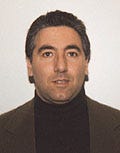April 1, 1999
Medical Device & Diagnostic Industry Magazine
MDDI Article Index
An MD&DI April 1999 Column
HELP DESK
 Richard F. Wallin, DVM, PhD, is president of NAMSA (Northwood, OH) and lead author of a series on ISO 10993 that was published in MD&DI throughout 1998.
Richard F. Wallin, DVM, PhD, is president of NAMSA (Northwood, OH) and lead author of a series on ISO 10993 that was published in MD&DI throughout 1998.
In the December 1998 article on ISO 10993-12, there is no mention of the test for pyrogenicity. Is this covered by ISO 10993 or a different standard?
ISO 10993 covers testing for pyrogenicity in the section dealing with systemic toxicity. However, a distinction must be made between pyrogen testing for lot release purposes and testing to satisfy biocompatibility requirements. Lot release tests help ensure that product headed for patient use is free of bacterial endotoxins. Medical devices that come in contact with water during manufacturing or processing may be subject to endotoxin contamination. The bacteria in water are the most common source of the endotoxins that cause fever when injected intravenously. The reagent Limulus amebocyte lysate (LAL) is commonly used for lot-to-lot medical device testing. However, ISO 10993 does not deal with lot-to-lot testing requirements but with the biocompatibility of materials.
For biocompatibility testing, material samples are prepared as described in the December article. It is common to extract at 70ºC for 24 hours using the specified surface or weight-to-volume ratios mentioned. The test ensures the absence of material-mediated pyrogenicity caused by various chemical extractables that, like bacterial endotoxins, cause a fever when a sufficient dose is injected intravenously. The rabbit pyrogen test is used for biocompatibility because rabbits respond to pyrogens regardless of their source, while LAL reagent is selectively sensitive to bacterial endotoxins. This test may, therefore, respond to the presence of bacterial endotoxins, but those results are not relevant to biocompatibility issues.
 Paul J. Sordellini of Quality Solutions Inc. (Annandale, NJ) is a consultant serving the medical device industry.
Paul J. Sordellini of Quality Solutions Inc. (Annandale, NJ) is a consultant serving the medical device industry.
I've read that the principle of "three in one" as it applies to a complete EtO sterilization cycle being done in one room reduces the time necessary for desorption from days to only 10 hours. Does this principle really exist?
First, desorption rates of EtO from medical devices depend on many factors, including packaging material and design. It's not realistic to claim that all medical devices can be successfully aerated in 10 hours, just as it's not accurate to say that all devices must undergo several days of aeration. Desorption times can be reduced by aerating at higher temperatures, aerating under vacuum, adding steam washes to the postevacuation phases, and in some cases by humidifying the aeration room. However, in each case, the aeration time must be determined empirically.
"Three-in-one" EtO sterilization consists of performing conditioning, gas sterilization, and aeration all within the same vacuum-pressure vessel, reducing product load movement, time, and labor requirements. Conditioning and aeration inside a sterilizer are accelerated when performed under vacuum as opposed to atmospheric pressure. However, this monopolizes use of the sterilizer for long periods of time, which can dramatically decrease the profitability for some facilities.
The three-in-one method was often used before the 1990s when many manufacturers had in-house sterilization operations that used inexpensive, nonflammable EtO/chlorofluorocarbon (CFC) blends. Gas sterilization hardware for use with nonflammable mixtures was also inexpensive, so several sterilizers could be placed in proximity to the manufacturing area.
When the 1987 Montreal Protocol led to the phasing out of CFCs, the industry was left with a prohibitively expensive new nonflammable sterilant blend (EtO/hydrochlorofluorocarbon) or pure EtO. Most manufacturers chose pure EtO and a new business formula took effect: pure EtO sterilizers were expensive; external preconditioning and aeration rooms were cheap. With pure EtO, sterilizer throughput determines the operation's profitability. By preconditioning and aerating externally, the loads-per-day capacity of the sterilizer is increased. A three-in-one operation can occupy a sterilizer for as long as three days per load. With the rare exception of low-volume, high-cost devices sterilized in-house, a three-in-one system may not be a profitable choice. Such an approach should only be used with products that allow dynamic environmental conditioning both to humidify the load and to force the removal of EtO after exposure.
Our mixture of EtO/CO2 is explosive. How can the danger of an explosion be eliminated?
EtO is explosive when its concentration in air exceeds 3% by volume. Nonflammable blends of 8.5% EtO with 91.5% CO2 require sterilizers rated for high positive pressures in order to achieve moderate concentrations. If the EtO/CO2 mixture contains more than 8.5% EtO, it should be treated in the same manner as pure EtO.
Sterilization systems for 100% EtO are expensive to set up but economical for routine use. The risk of explosion is eliminated by using specially rated hardware—nonsparking/intrinsically safe—to eliminate ignition sources. Prior to admitting EtO to the sterilizer, most of the air is displaced from the load by diluting it with an inert gas such as nitrogen or carbon dioxide. Each time the sterilizer is evacuated and backfilled with an inert diluent, the remaining amount of air decreases until the risk of flammability is eliminated. At the end of the process, inert gas again displaces the EtO before air is admitted to the sterilizer and the load removed. For more information on what equipment to use with 100% EtO, consult AAMI TIR No. 15-1997.
"Help Desk" solicits questions about the design, manufacture, regulation, and sale of medical products and refers them to appropriate experts in the field. A list of topics previously covered can be found in our Help Desk Archives. Send questions to Help Desk, MD&DI, 11444 W. Olympic Blvd., Ste. 900, Los Angeles, CA 90064, fax 310/445-4299, e-mail [email protected]. You can also use our on-line query form.
Although every effort is made to ensure the accuracy of this column, neither the experts nor the editors can guarantee the accuracy of the solutions offered. They also cannot ensure that the proposed answers will work in every situation.
Readers are also encouraged to send comments on the published questions and answers.
Copyright ©1999 Medical Device & Diagnostic Industry
About the Author(s)
You May Also Like
